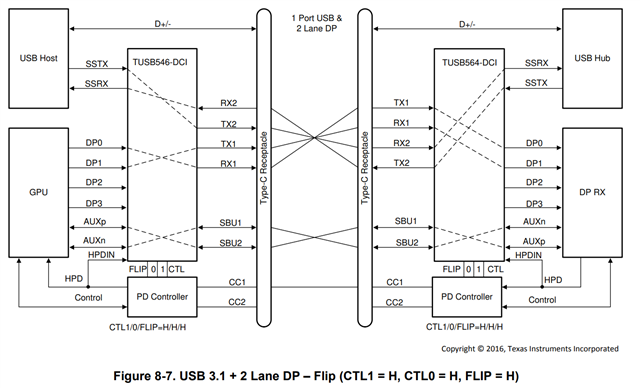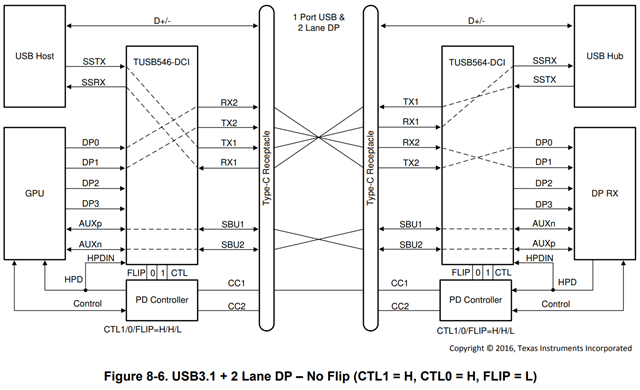Other Parts Discussed in Thread: TPS25810
Tool/software:
Hi,
I'm trying to use a TUSB546 to send USB 2.0, USB 3.1 and a single DisplayPort lane (one P/N pair with DP1.4) to a type C receptacle. This is a source only device, also using a TPS25810 to send up to 3A at 5V. I hadn't planned to need a PD device. For some context, this is on an AMD (Xilinx) Zync UltraScale+ device. One of the GTH transceivers is handling USB and another handles DisplayPort. On their development board these are separate ports.
Reading through the configuration on the datasheet is proving confusing. I'm looking at section 8.3.2, comparing the two figures:


Whether my DisplayPort ends up on TRX1 or TRX2 depends on whether FLIP is HIGH or LOW. How will I know which way to set this control pin?
Say the cable is inverted at the sink end, something will have to compensate. Since the sink is the receiver, the surely that would have to be the device which switches? Then if so, does the source even need a multiplexer, or could I just wire the DisplayPort lane and USB to one each of the lanes?
Appreciate that's quite a few questions but it'd be nice to know if I really require this device or that I'm adding complexity for no reason.
Thanks :)

